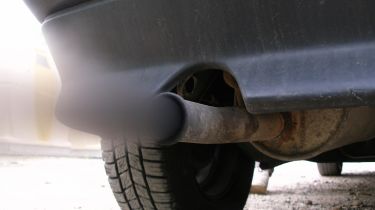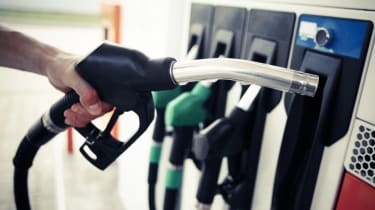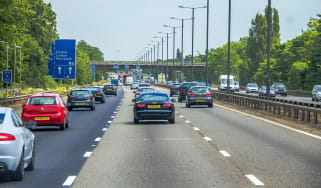What is a Diesel Particulate Filter? Guide to DPFs and how to look after them
All modern diesel cars are fitted with a Diesel Particulate Filter (DPF). We explain what it is, why your car needs one and how to keep it maintained

All diesel cars sold since 2009 have been fitted with a diesel particulate filter, or DPF, in an effort to clean up the exhaust emissions of diesel vehicles by capturing harmful particulates created from the combustion of diesel fuel. The technology works well and has significantly cleaned up diesel emissions – but the devices themselves can cause a few issues that owners of diesel cars should be aware of.
As DPFs rely on heat and regular use to work effectively, short journeys and slow speeds can cause problems as the component clogs up – something that can reduce your car’s performance, reduce the DPF’s effectiveness even further, and throw up significant repair bills further down the line.
In the latest cars, DPFs work alongside the selective catalytic reduction (SCR) system and AdBlue in order to keep your diesel engine running cleanly. While all of these bring valuable environmental benefits, they are also complex and increase the potential for problems as a car gets older. However, in this article we’re going to look more closely at the DPF, what it is, how it works and how you can avoid costly repairs.
What is a diesel particulate filter (DPF)?
Diesel fuel has a few differences to petrol, and diesel engines burn that fuel in a different way to petrol engines too. The byproduct of burning diesel is a lot of soot – far more than that released by a petrol engine.
We don’t need to tell you that soot isn’t a good thing – it’s proven to negatively affect the environment and people’s health. Diesel particulate filters exist to capture the soot produced by a diesel engine, trapping particles above a certain size that contribute to several ailments and lung diseases, and prevent it from being emitted through the exhaust into the atmosphere.

DPFs have been mandatory on diesel cars since 2009, but many diesels sold before that date were sold with them already as manufacturers aimed to get ahead of the legislation and cash in on buyer demand for greener and more efficient engines.
What is DPF cleaning?
While a DPF’s first job is to trap and hold onto harmful particulates, it needs to get rid of them, too. It does this by exposing them to very high temperatures, burning the particulates and turning them into harmless ash, in a process called DPF regeneration.
The process can only occur when the exhaust gases are hot enough, something that will only happen if the diesel car is driven for an extended period of time. If a diesel car is never driven on a fast road for any lengthy period of time, the exhaust gases will not reach a temperature high enough for regeneration to occur.
As a result, diesel cars aren’t particularly suitable for people who only do short journeys around town because soot will build up over time and the DPF won’t be able to burn it off. Eventually, the soot will block the DPF completely and cause engine problems like reduced fuel-efficiency and misfiring, before the engine management system forces the car into limp mode with heavily reduced performance.
It’s recommended that you take your diesel car on a long and brisk drive on the motorway, dual carriageway or fast A-road for half an hour or longer at least once a month. Many specialists will also advise keeping the car in a lower gear (say fourth in a six-speed manual model) at the relevant speed limit to keep engine revs up for higher temperatures and a more efficient burn of the DPF’s contents. This does mean using a bit more fuel than you might normally, but it could save you much more money in repairs later on.
DPF regeneration: passive vs. active
The DPF can start regeneration in a couple of ways, but both need the exhaust gases to get extremely hot – usually around 500 degrees Celsius.
‘Passive regeneration’ takes place when you regularly drive your car at speeds above 40mph for extended periods as part of your normal driving. This will naturally bring the exhaust gases up to temperature, allowing the DPF to burn off any built up particulates. It’s a process that should be undetectable from behind the wheel.
However, ‘active regeneration’ will take place if you do not drive at speed often enough for passive regeneration to occur. The engine will try to clear the DPF by injecting extra fuel into the engine in an effort to artificially increase the temperature on even a short run, allowing the DPF to burn off the soot. Some diesel engines are designed to do this more often than others. As active regeneration involves higher temperatures, you may notice it from your engine’s cooling fan running in unexpected situations, such as for several minutes after you’ve switched off the car.
What to do if your DPF light comes on
If an amber DPF light comes on, it’s usually just a warning that the device needs cleaning. More often than not, this can be rectified by starting the DPF regeneration process which will be outlined in your car’s handbook. For most cars, it involves driving at speed along a fast A road or motorway for around 30 minutes to allow the exhaust gases to get up to temperature. If you follow these instructions and the light doesn’t go out, you need to take the car to a dealer as soon as possible – the DPF could be damaged.
If you see a red DPF warning light, however, this means you need to pull over to the side of the road and phone your breakdown company to take you to the garage, as further driving is likely to cause damage and lead to expensive repairs.
Can you manually clean a DPF?
While it’s possible to buy DPF cleaner fluids from various motor factors and spare part suppliers, the jury is out on how effective these are. Ultimately, DPF cleaning is a job best left to the professionals.
Depending on how badly blocked the DPF is, the dealer may be able to use special DPF cleaner products and techniques. If it doesn’t offer this service, ask if the DPF can be removed and sent to a specialist firm for cleaning. This process should cost around £100 – although the garage will obviously charge you for removing and refitting the filter.
If you’re unlucky, excess soot may have damaged the DPF beyond repair. If this is the case, it will have to be replaced, which can cost as much as £2,000 or more. Shopping around for an aftermarket DPF could save you some money, however.
Which cars have a DPF?
All diesel cars produced from 2009 on will have a DPF, while larger cars and trucks may have needed one fitted much earlier to comply with 2004’s ‘Euro 4’ emissions targets. If you’re not sure, you can find out if your car has a DPF by looking in the handbook. If your car requires an oil with a low ash content, that can also signify that it has a DPF.
All Volkswagen Group 1.6-litre diesels produced before 2009 have a DPF, including any Skoda Greenline models. Volvos produced after 2006 will almost certainly have a DPF, and all Land Rovers from 2010 (including the Range Rover Evoque) have them. All 1.6-litre and 2.0-litre Ford TDCi engines also have a DPF, as do the majority of Kia diesels built from 2008.
Should I consider DPF removal?
No. While there are plenty of unscrupulous individuals offering a DPF delete or removal, doing so will only end badly. Not only will you be causing unnecessary damage to the environment, but as a DPF check has been part of the MOT test since 2014 – including whether any dashboard light has illuminated from it being damaged or removed – your car will automatically fail its MOT test because it’s emitting more harmful gases than it should.
One final word of caution: if you own a diesel car, make sure you know how to get your DPF to regenerate, so you can do it as soon as you see the warning light come on. Stopping the car (which you’ll need to do to consult the handbook) can make the blockage worse. And, if you frequently turn off the engine while the DPF is going through the regeneration cycle, it can lead to severe engine damage.
Frequently Asked Questions
Why do diesel emissions matter? Our article on the evolution of diesel and emissions explains all. Many modern diesel cars also come with AdBlue, so read our guide for all you need to know.
Recommended

Classic car tax exemption: which historic vehicles qualify?
Most Popular

Omoda E5 targets rivals: now with zero deposit and APR

Ford Puma Gen-E driven: Electric charmer or too little, too late?
Tips & advice

Car dashboard warning lights: what does each symbol mean?

Electric car charging stations: public networks, charger types, apps and maps









